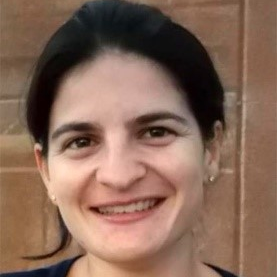Micro- and Nano-Fabrication of Polymers for Regenerative Medicine
A special issue of Micromachines (ISSN 2072-666X). This special issue belongs to the section "B:Biology and Biomedicine".
Deadline for manuscript submissions: closed (1 July 2020) | Viewed by 5102
Special Issue Editor
Interests: biocompatible and natural polymers for regenerative medicine; nanofibrous wound dressings with antimicrobial activity and enhanced cell proliferation; functional nanocomposites with controlled surface and mechanical properties; microfluidic devices for biological assays and food safety; nanofabrication approaches for polymers
Special Issues, Collections and Topics in MDPI journals
Special Issue Information
Dear colleagues,
Regenerative medicine is a multidisciplinary field that aims to repair, replace and regenerate injured or diseased human tissues and organs. The initiation and progress of the regeneration process require the combination of cells for biological functions, scaffolds to support cells, and biochemical compounds to control cell behavior. Micro- and nano-structured polymeric scaffolds are widely used in regenerative medicine to provide physical and chemical cues for cell attachment, proliferation and differentiation.
This Special Issue focuses on new advances in micro- and nano-fabrication technologies for natural and synthetic polymers for tissue engineering. Topics of interest for research papers, short communications and review papers include, but are not limited to: (i) patterning and lithographic methods to create surface micro- and nanostructures to instruct cell behavior; (ii) additive manufacturing approaches for 3D hierarchical scaffolds; (iii) electrospinning of fibrous membranes and electrospraying of micro/nanoparticles to be used as scaffolds and membranes for tissue engineering and drug delivery systems; (iv) chemical and physical approaches to produce nano- and micro-particles, nanowires, nanotubes and nanofibres for the release of bioactive compounds.
Dr. Elisa Mele
Guest Editor
Manuscript Submission Information
Manuscripts should be submitted online at www.mdpi.com by registering and logging in to this website. Once you are registered, click here to go to the submission form. Manuscripts can be submitted until the deadline. All submissions that pass pre-check are peer-reviewed. Accepted papers will be published continuously in the journal (as soon as accepted) and will be listed together on the special issue website. Research articles, review articles as well as short communications are invited. For planned papers, a title and short abstract (about 100 words) can be sent to the Editorial Office for announcement on this website.
Submitted manuscripts should not have been published previously, nor be under consideration for publication elsewhere (except conference proceedings papers). All manuscripts are thoroughly refereed through a single-blind peer-review process. A guide for authors and other relevant information for submission of manuscripts is available on the Instructions for Authors page. Micromachines is an international peer-reviewed open access monthly journal published by MDPI.
Please visit the Instructions for Authors page before submitting a manuscript. The Article Processing Charge (APC) for publication in this open access journal is 2600 CHF (Swiss Francs). Submitted papers should be well formatted and use good English. Authors may use MDPI's English editing service prior to publication or during author revisions.
Keywords
- Surface patterning
- Soft lithography
- Electrospinning and electrospraying
- Phase separation methods
- Self-assembly
- Rapid prototyping at micro/nanoscale
- Colloidal chemistry






